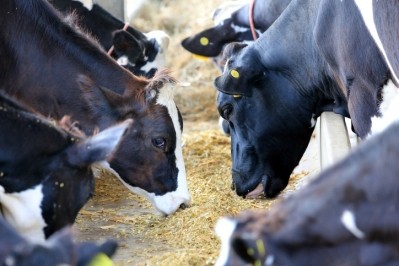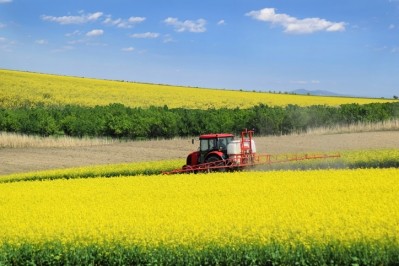Wet weather could hinder Canadian grain quality, may boost feed availability
The US Department of Agriculture (USDA) released details of feed grain and grain production in Canada in a Foreign Agricultural Service (FAS) agricultural attache’s report last week.
Overall, wet weather in parts of Canada is expected to increase amounts of feed quality grains as wheat, barley and oat may have taken damage at harvest and could alter feed imports from the US, the attaché said. However, the total area planted in wheat is expected to increase in the 2018/19 marketing year and offset the yield reduction.
“Area planted to field crops, in general, was at a ten-year high for marketing year (MY) 2018/19, with canola and spring wheat leading the way,” he said. “Looking forward, the steady expansion of soybean area planted across the prairies is expected to continue to alter crop ratios.”
In 2019/20 soybean producers are expected to consider the low price of soybean contracts related to the Chicago Board of Trade prices and spring growing conditions, he said. “Fall 2018 rain and snow should improve subsoil moisture levels in Manitoba and Saskatchewan, creating better conditions for planting soybeans in 2019 and drawing area out of wheat in MY 2019/20,” he added.
Wheat and weather
A long winter period, which extended into April delayed the start of the wheat growing season in 2018/19, the attaché said. Weather challenges continued with a hot and dry May and little soil moisture retention.
“Adequate rains in June allowed the wheat crop to germinate and sprout, but prolonged periods of dryness throughout July and August led to stunting and lower yields overall,” he added.
In 2018/19, the average yield for wheat is predicted to be 3.16 metric tons per hectare down from the yields seen in 2017/18 and 2016/17, he said. But, an increase in harvested area is anticipated to expand total production by about 3.5% and past 31m metric tons (MMT).
“Poor weather in late September and early October, including early snows, is expected to have reduced the quality of MY 2018/19 spring wheat, which typically accounts for 94% of Canada’s total wheat production,” the attaché said. “The Canadian Grain Commission’s (CGC) sample survey from October 23, 2018, revealed that 77% of spring wheat graded number 1, 11% number 2, and 7% number 3. Number 3 grade is considered ‘feed grade.’”
The amount of spring wheat receiving lower scores is anticipated to increase as more information is collected, he said. However, the change could “alleviate” concerns about the supply of livestock feed in Western Canada and drop feed corn imports from the US for the rest of 2018/19.
“Record high cattle on feed numbers in Canada in August 2018, combined with expected higher supplies of lower quality barley and spring wheat led FAS/Ottawa to project feed wheat consumption at 5,000 [metric tons] for MY 2018/19,” he added.
Throughout 2017/18, Canada imported about 444,000 metric tons of wheat, about 65% stemming from the US, the attaché said. The country exported about 22m metric tons.
There was a short suspension of wheat sales to Japan and South Korea following the announcement that biotech wheat had been found in Alberta, he said. But, trade was altered for less than a month and the total effect is considered minimal.
Barley and oats
Barley yields in 2018/19 are anticipated to drop by about 6% from 2017/18 stemming from dry weather, but overall production is forecast to increase based on an expansion in area planted, the attaché said. Total production is expected to increase to 8.23m metric tons.
“Just over 2m MT of Canadian barley production is expected to be used for malting (for domestic use and for export), while the remainder (much of which will be malting quality) is expected to be used as feed,” he said.
In 2017/18, Canada imported about 59,000 metric tons of barley, with the majority originating in the US, he said. It exported about 2.02m metric tons – with about 85% going to China.
“The bulk of Canada’s barley production is used as livestock feed,” he said. “The majority of Canada’s cattle industry is located in the prairies, with over 70% of fed cattle in Alberta and Saskatchewan.”
”Feeder cattle are the primary consumers of barley in Canada,” he added. “Cattle numbers on feed in Canada have increased significantly this year. As of October 1, 2018, the number of cattle on feed in Alberta and Saskatchewan was 18% higher than 2017.”
Per hectare, oat yields are predicted to be down in 2018/19, and crop quality is expected to have been hampered by weather, said the attaché. Total area planted dropped 5% from 2017/18 and the supply of oats is forecast to see a 6% decline in 2018/19.
Oat imports fell by about 30% in 2017/18, he said. Total exports for that year were about 1.63m metric tons.
Corn predictions
Corn yields are forecast to be similar to levels seen in 2017/18 and total production is expected to increase to 14.5m metric tons in 2018/19, the attaché said.
“Corn area planted in Manitoba reached 172,000 hectares in MY 2018/19, equal to 12% of national area planted,” he said. “Area planted in Western Canada continued to increase and displace barley area planted.”
Corn production is predicted to continue to displace barley, as there has been little investment in new varieties of barley and corn yields are improving, he said. Livestock producers also are increasing the amount of corn used in rations.
Domestic production also is starting to alter the amount of corn imported from the US, he said. However, there was a bump in imports in 2017/18 attributed to the expansion of cattle on feed and a smaller amount of Canadian-generated forage and feed-quality barley and wheat.
In 2017/18 Canada exported about 1.85m metric tons of corn, predominantly to Europe and the US, the attaché said. Canada imported about 1.66m metric tons of corn destined for use in swine feed, ethanol production and cattle feed.
“Transportation costs to move corn from Ontario and Quebec to the prairies tends to price Canadian corn out relative to US corn coming up from North Dakota and Minnesota,” he said. “The same argument applies to corn moving into British Columbia. Surplus corn from Ontario and Quebec is generally exported to the United States and Europe instead of to Western Canada.”













